Frictionless Automation Development and Faster Time to Value With 2022.4 Release

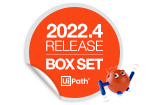
Developers have always been a core user of the UiPath Platform. As such, in the 2022.4 release we’ve placed a strong emphasis on helping developers build better, more reliable automation in less time. And with less resources. We’ve improved integrations between UiPath products, and transitions of data and resources from one area of the platform to the next, a lot easier. Thus, improving the speed of development.
The hand off from one product to another, or from business user to developer, has never been easier. Developers have a smoother flow of automation inside organizations, allowing all participants to easily complete their part before handing over the project.
Let’s take a look at the updates in the 2022.4 release, making all of the above possible.
UiPath Studio family of products
Every user of UiPath StudioX starts their automation path on the intro splash screen. So, let’s start there and look at StudioX updates in the 2022.4 release.

As you can see, we’ve added substantial improvements for working with templates, when creating your own template or using a template to jumpstart your automation. You can now easily find a curated collection of reusable tasks on the splash screen, either from UiPath Marketplace or built by your center of excellence (CoE). Furthermore, creators can now add customizable fields that can be configured and adapted to users’ data.

And that isn't the only change you'll notice right at the start of StudioX. We’ve made significant improvements to the Studio product family performance: load and automation creation times have been significantly decreased, meaning fewer splash screens and spinning circles. And usability improvements provide a simpler, more consistent experience, ensuring users (even beginners) can be more productive.
We’ll talk more about UiPath Integration Service later in the blog post, but let’s quickly talk about an update to Studio via Integration Service in 2022.4. With the help of Integration Service, developers can now easily build automations in Studio based on events from external platforms, thanks to Integration Service trigger support. For example, a delivery time change in SAP® can automatically trigger an automation to communicate new timelines with customers and shippers.
Finally, you can now easily tag your automations for easy discoverability when working in extended teams. Your project can have a better description of your process. Any information can be stored in tags, such as department, targeted applications, owner, review, etc. The list of existing tags will be retrieved from UiPath Orchestrator, but you can also define new tags from Studio. All tags information will be included in the published process so they will stick for the lifetime of your automation.

UiPath Integration Service
Integration Service continues to grow its catalog of prebuilt, popular API-based connectors. In just six months, connector catalog additions now number over 50 connectors.
New connectors include Campaign Monitor, GoTo Webinar, Hootsuite, Mailchimp, Salesforce Marketing Cloud, SAP® Concur, Twilio SendGrid, Slack, Smartsheet, Twitter, and Webex Teams.
The latest release of UiPath Integration Service helps simplify sales and marketing processes by allowing automations to span multiple systems. For example, connecting Salesforce Marketing Cloud with Twilio SendGrid (or Mailchimp) enables campaign details to be shared with email platforms. Adding in Hootsuite further automates your marketing outreach through social media.
Connectors come with event triggers, native objects, and standard activities. So they're ready to go for immediate incorporation into the UiPath Studio design environment.
Now, both user interface (UI) and API automation capabilities converge in a single run time, and a user-friendly single user experience (UX).
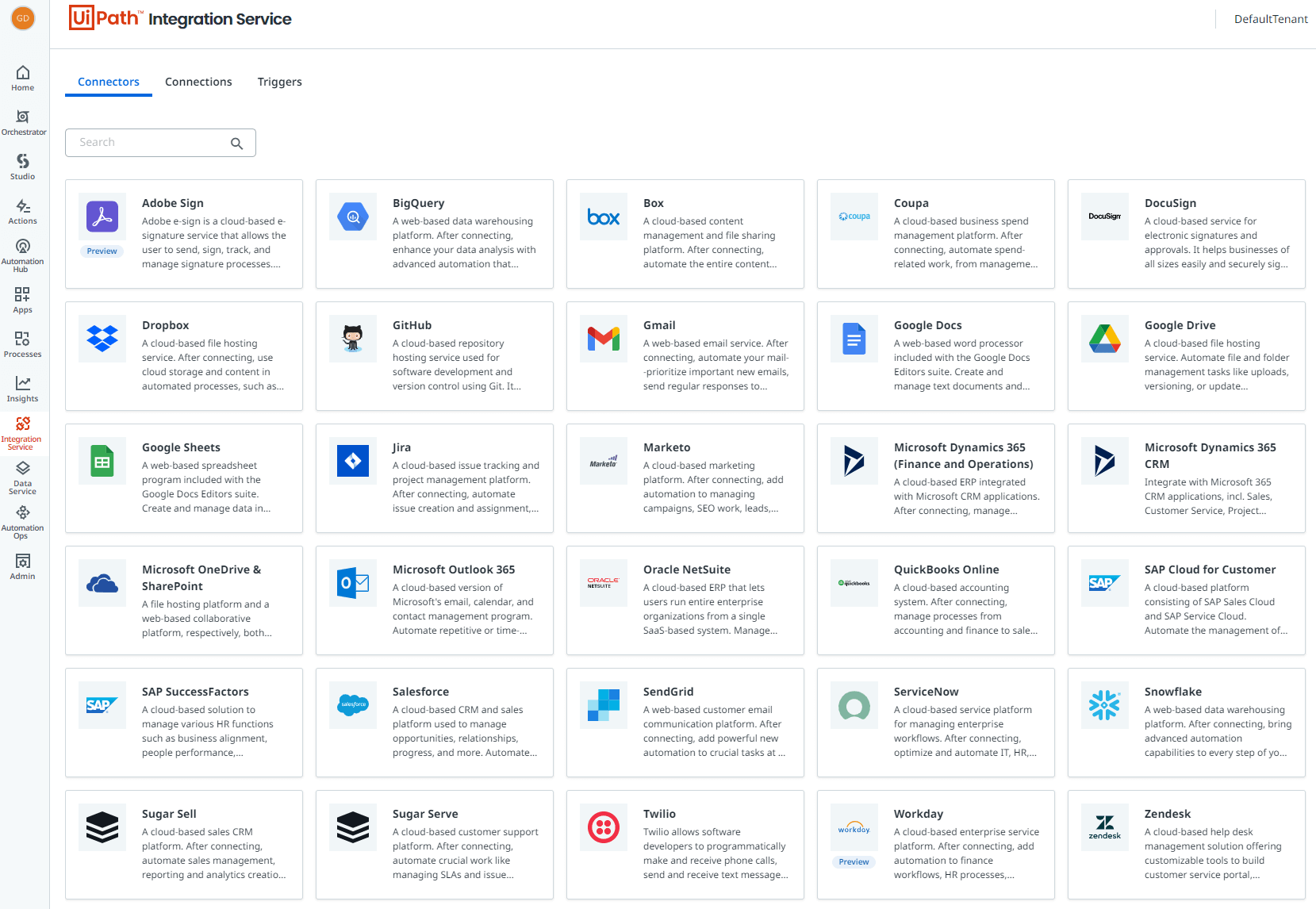
UiPath Apps
UiPath Apps is the easiest way for automation developers to build automation-powered, stunning visual interfaces. The 2022.4 release brings you even more ways to engage end users through epic automation experiences. Enhancements in this release include:
Automation Launchpad
Evangelizing your CoE now has a home page. Create an easily configurable “intranet” page for your CoE to share communications with your entire company. Uncover more about Automation Launchpad.
Support for Integration Service
Unite your UI and API automations into an elegant screen. You could always use UiPath Apps to create UI automation-powered interfaces. But when your work application already has an API, why recreate the wheel?
With Integration Service and Apps, you can create automation-powered apps that leverage the performance of your API-driven tools. You could say it’s like UiPath Apps is finally meeting your favorite apps. With a growing library of Integration Service connectors like Jira and Microsoft Outlook, you can easily build stunning visual interfaces for your automations and your APIs.
Faster performance, new templates and controls
Life is way easier for automation developers and end users with the newest updates to UiPath Apps. We heard your feedback and added new controls including support for iFrames, radio buttons, document viewers, tabs, and editable grids. We also added templates for the most popular website types so you can quickly create the automation-powered interface of your dreams.
The new templates include collapsible panels, dashboards, and more to speed your app development. And speaking of speed, Apps overall design and run time experience has been improved, with unattended automations now processing 70% faster in Apps.
UiPath Task Capture
StudioX export
Citizen developers can now not only document their idea, but also speed up development by exporting an automation skeleton from Task Capture to StudioX. This will help CoE leads accelerate their citizen development programs, ensuring that anyone who's interested can be empowered to take on frontline automation opportunities for themselves or teammates.
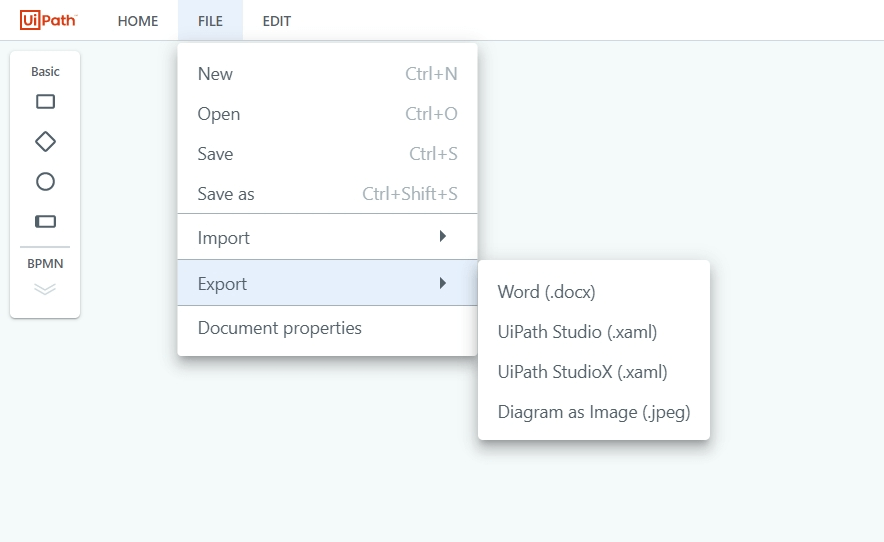
Export to Studio and StudioX enhancements
One of the enhancements in 2022.4 is an updated recorder in both UiPath Studio and StudioX. We've also enabled extensions support to improve the quality of selectors. You are now able to choose selector quality mode for generating a .xaml file for export to Studio or StudioX. You can leverage three predefined modes or configure custom selector precision according to your needs to create even more accurate automation skeletons.
When exporting to Studio, you can now also choose the type of activities that you want to leverage for building automations—classic or modern.
We’ve also improved personal identifiable information (PII) data masking in Studio and StudioX exports, making it easier for developers to identify the input type when working with .xaml files.
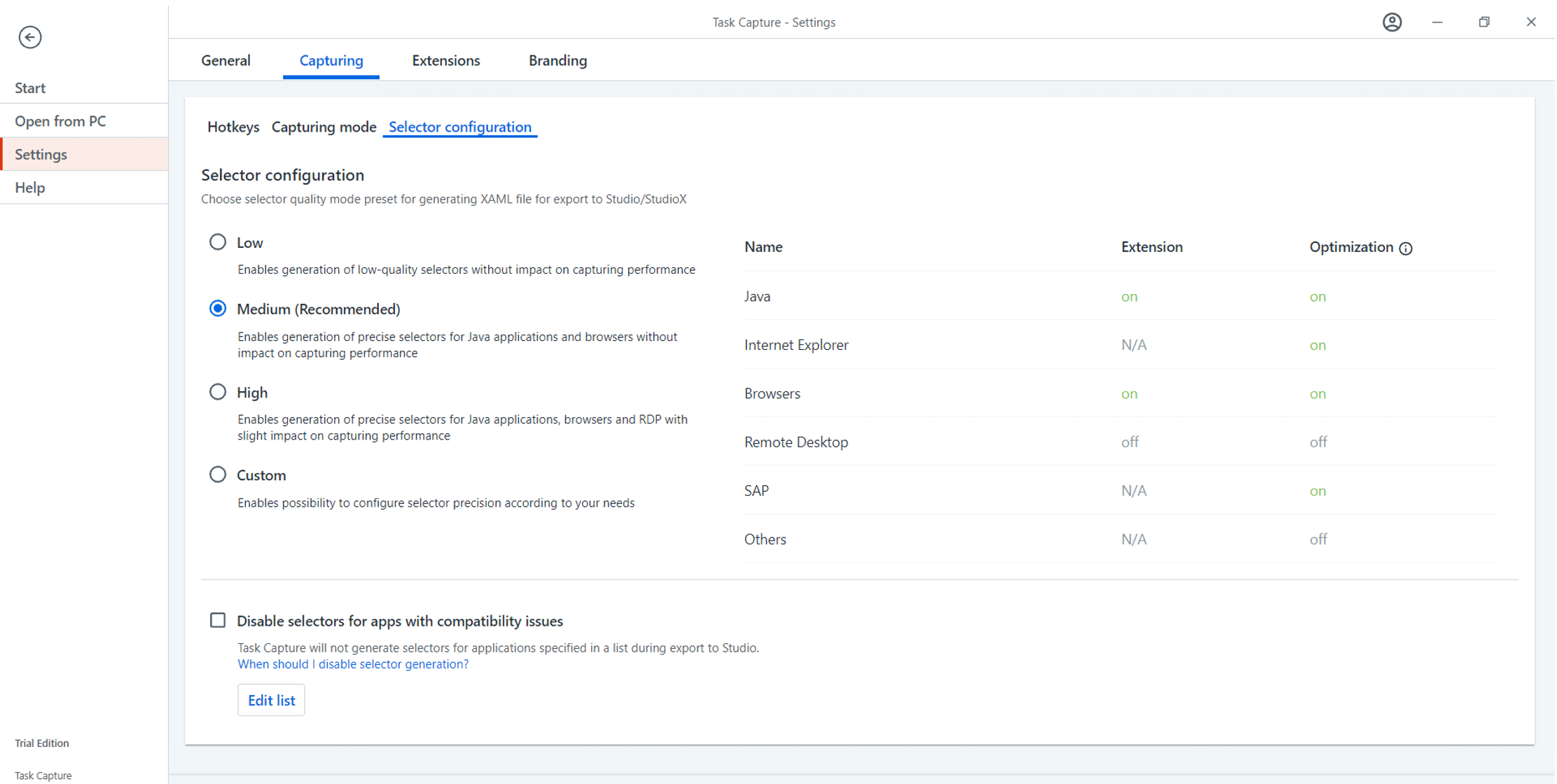
BPMN support
In 2022.4, we’ve introduced Business Process Model and Notation (BPNM) support for UiPath Task Capture. As a result, users are enabled to create comprehensive documentation, even for complicated scenarios, in accordance with business standards.
Leverage the newly added BPNM panel to easily access diagram elements that can be used to build a process map. Or change the type of existing supported elements to BPMN-compatible format. Add intermediate events as well as change icons on the elements to make your process maps even easier to scan visually. And save time by leveraging existing process maps created with other BPMN tools by importing them into a Task Capture project instead of creating them from scratch.
Users can also build exception handling flows and easily distinguish them from regular ones to deliver straightforward process documentation.
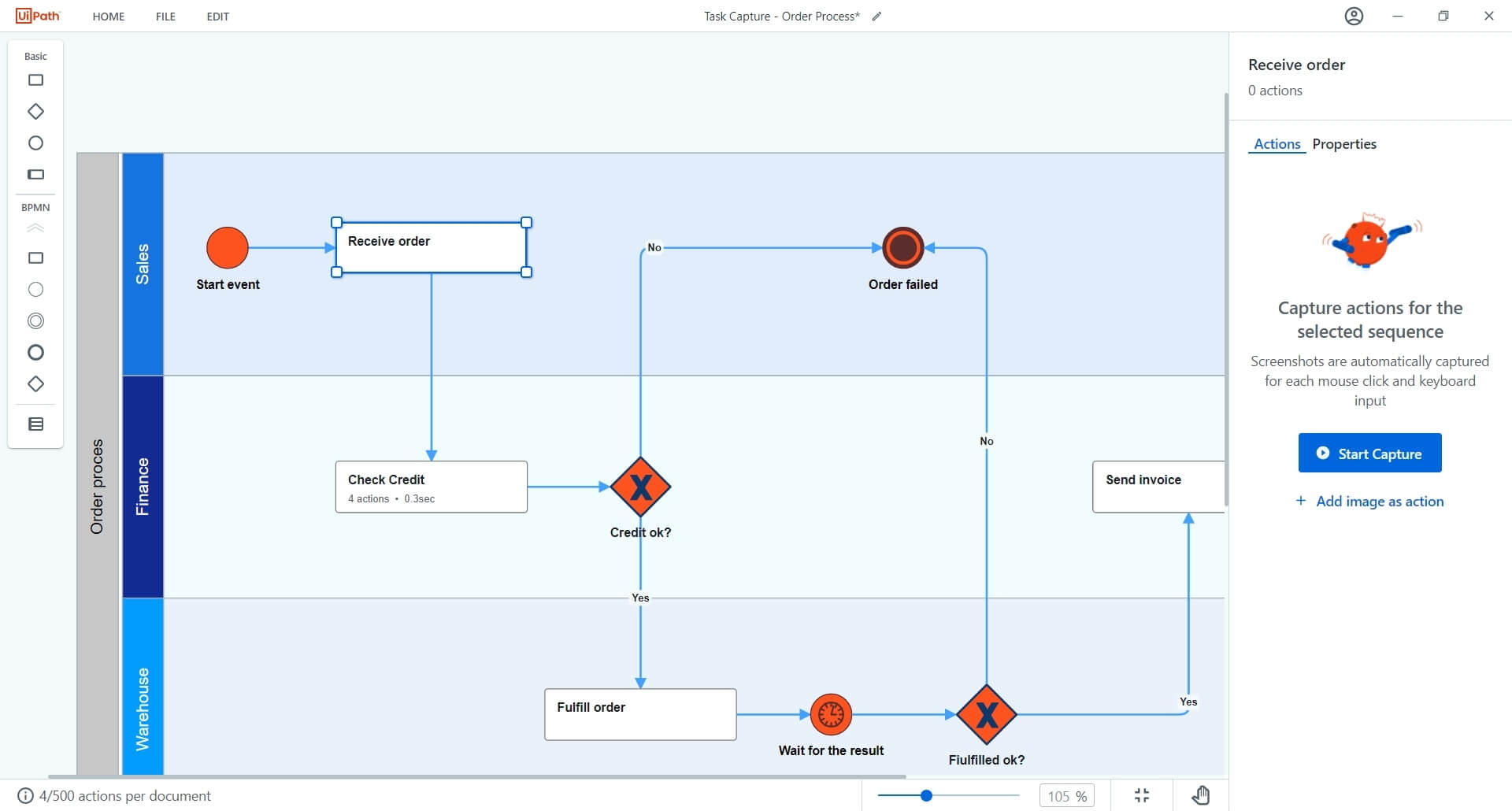
UiPath Automation Hub
Insights integration
Visualize the status and performance of your automation opportunities pipeline with a fully customizable dashboard template within UiPath Insights.
With this integration, your dashboard templates will come prepared to help you:
Get started quickly and build robust dashboards for day-to-day management and easier reporting to your stakeholders.
View team engagement—see the number of submissions, collaborations, and followed projects by user.
Track where and how your automations are impacting your business.
Now you can be ready to dive into the details or create your own custom dashboards in minutes.
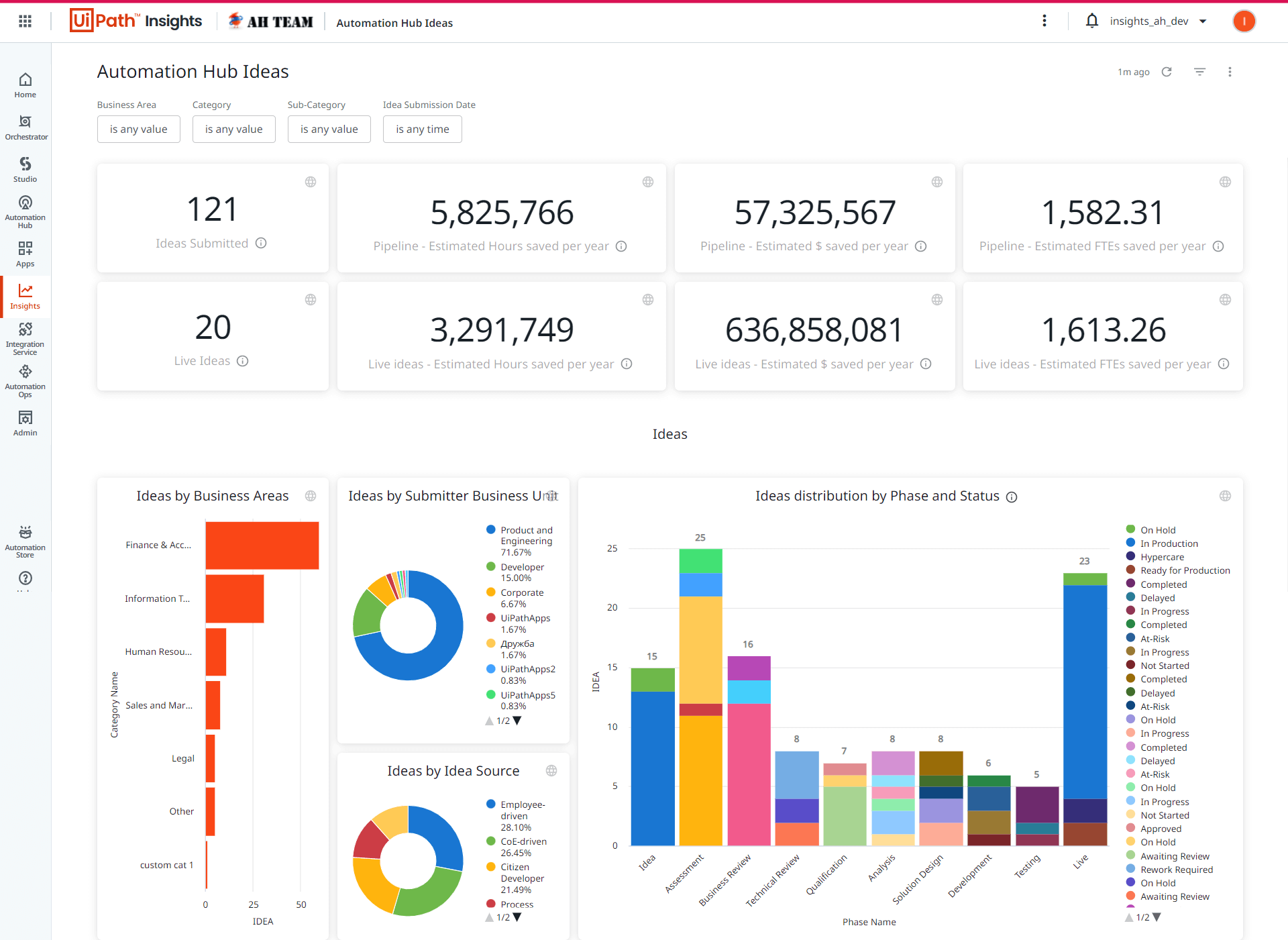
At dentsu we use Automation Hub as the central repository for all our global automation development efforts, which has accumulated to hundreds of ideas representing tens of thousands of hours saved. The new Insights integration has unlocked our ability to explore and analyze this data – tracking and analyzing a consistent set of performance metrics against all our use cases, and easily pivoting by our many functions and service lines across the world. We now have a more complete view of our automation efforts than ever before, and as a result, can more accurately report our business impact by sharing these detailed reports with our executive stakeholders.
Kate Hall, Director, Automation Solutions at dentsu international
We have several critical metrics used to track the impact of our automation program, from time and money saved to cost avoidance. With the Automation Hub dashboards within Insights, we can now analyze that information in detail to make tactical and strategic data-driven decisions – then easily share those results and specifics with our stakeholders.
Ciara Dillion, Process Automation Engineer at Chipotle Mexican Grill
Customize assessments per business line
UiPath Automation Hub lets you customize your assessments and define surveys relevant to each business line. We extended the customization system from Detailed Assessment to all built-in assessments (Overview Assessment, High-level Assessment, Citizen-developer Assessment, Miscellaneous Assessment). This will enable you to access automations accurately and prioritize easier by using the key performance indicators (KPIs) that matter to your business or specific business line.
Some of the new features allow you to:
Leverage the customization page to build on top of a default assessment
Upload one, copy an existing assessment, or set up your own from scratch
Determine your own KPIs and questions to define them
Remove default KPIs, add new, reorder, give more power to one item over the other, etc.
Easily share and reuse assessments relevant for the entire organization
Centrally view the results of the specific assessments in the Automation Pipeline
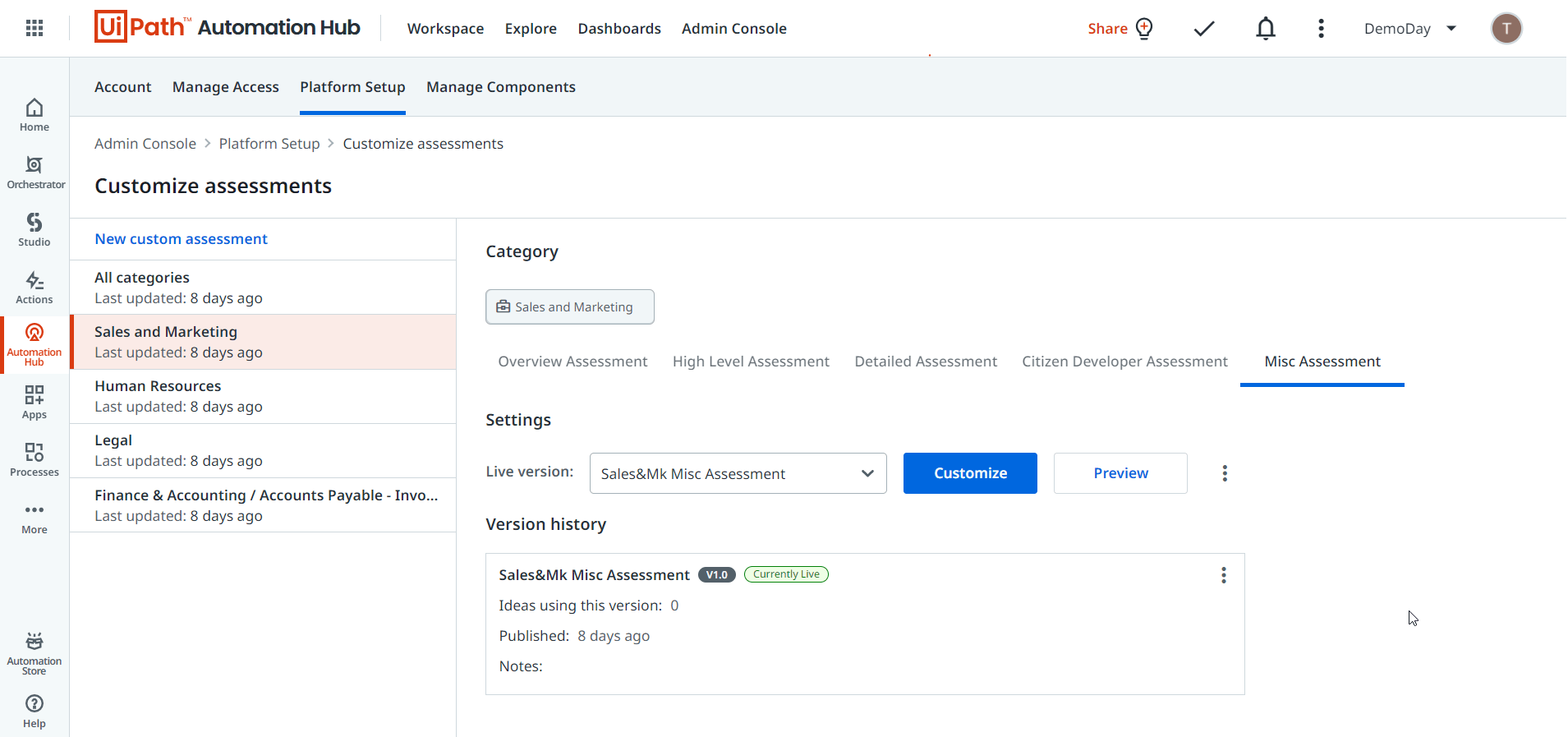
Managing change requests
Your business is fluid and change is constant. Automation Hub enables you to create, assess, and track change requests for existing automations. Now you can accelerate the implementation of an enhancement and prioritize it easier thanks to clear distinction between a parent idea and a change request. The 2022.4 release also provides you with more accurate reports, taking into account the benefits of all iterations of an automation.
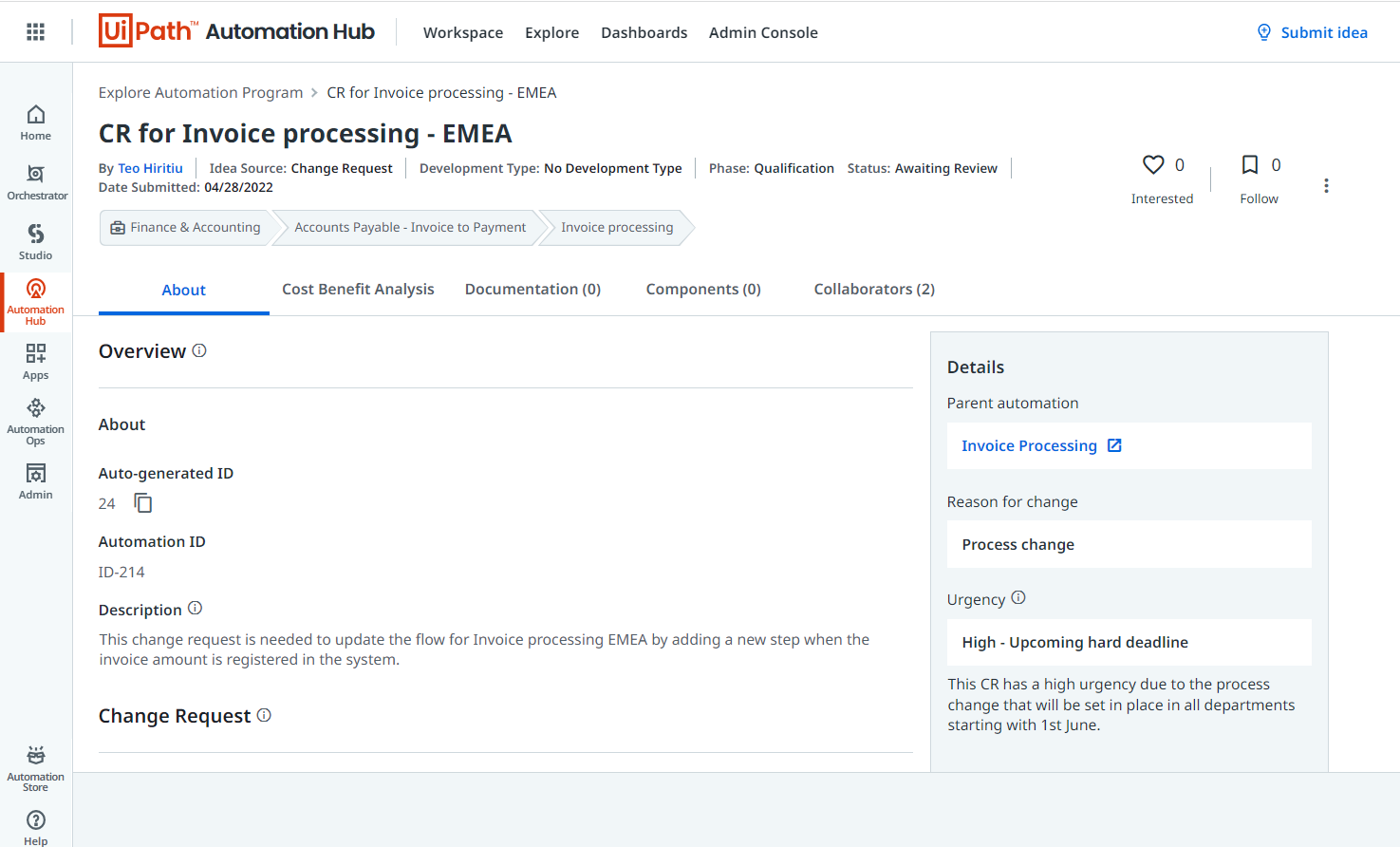
We invite you to join us on May 18 for a UiPath Live show focused on the 2022.4 release. The one-hour show, UiPath Live: The 2022.4 Release show, will be immediately followed by bonus breakout sessions. Be sure to invite your fellow CoE leads, IT professionals, developers, and QA team members—there's a dedicated breakout session for each!
Save your spot.

Director, Product Marketing, UiPath
Get articles from automation experts in your inbox
SubscribeGet articles from automation experts in your inbox
Sign up today and we'll email you the newest articles every week.
Thank you for subscribing!
Thank you for subscribing! Each week, we'll send the best automation blog posts straight to your inbox.



